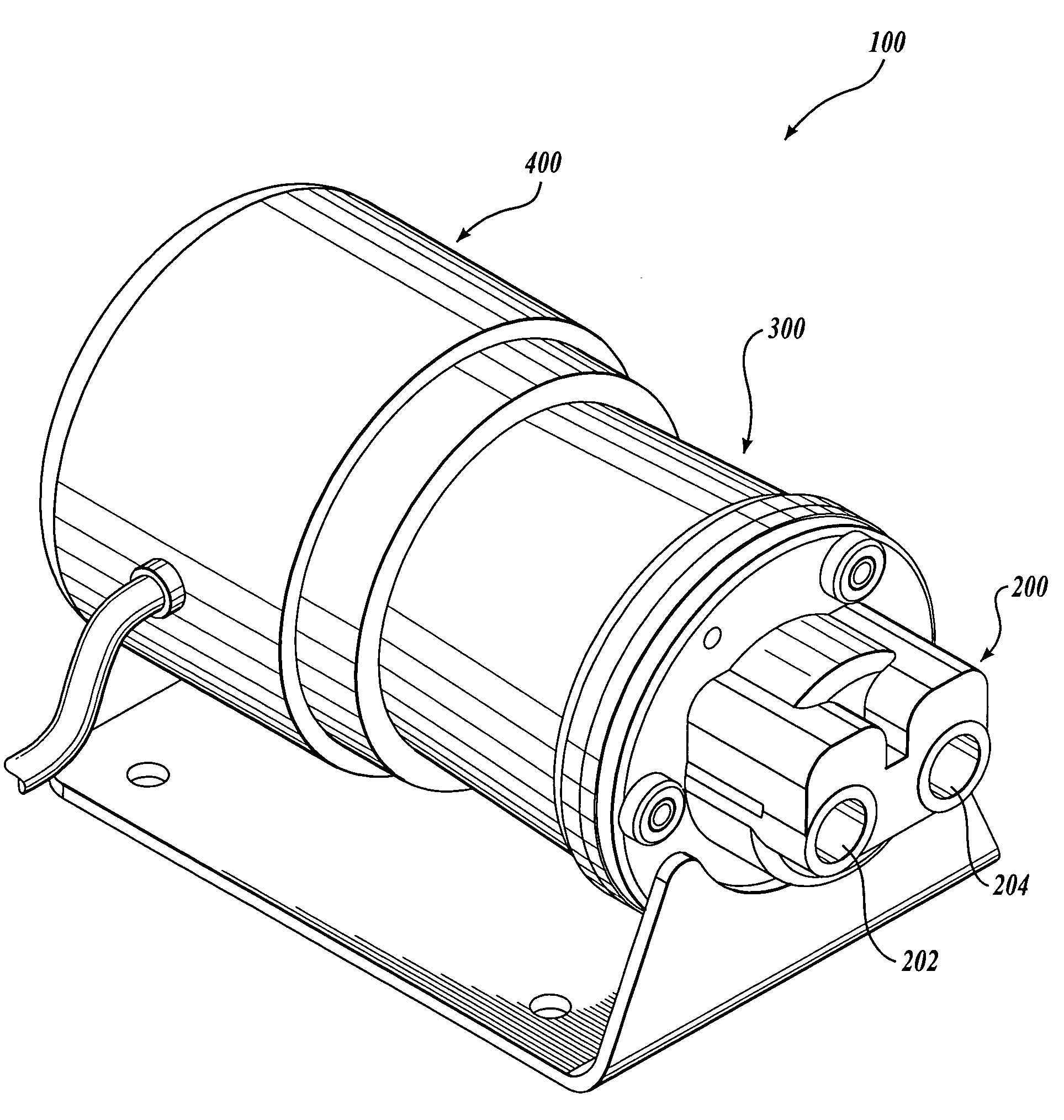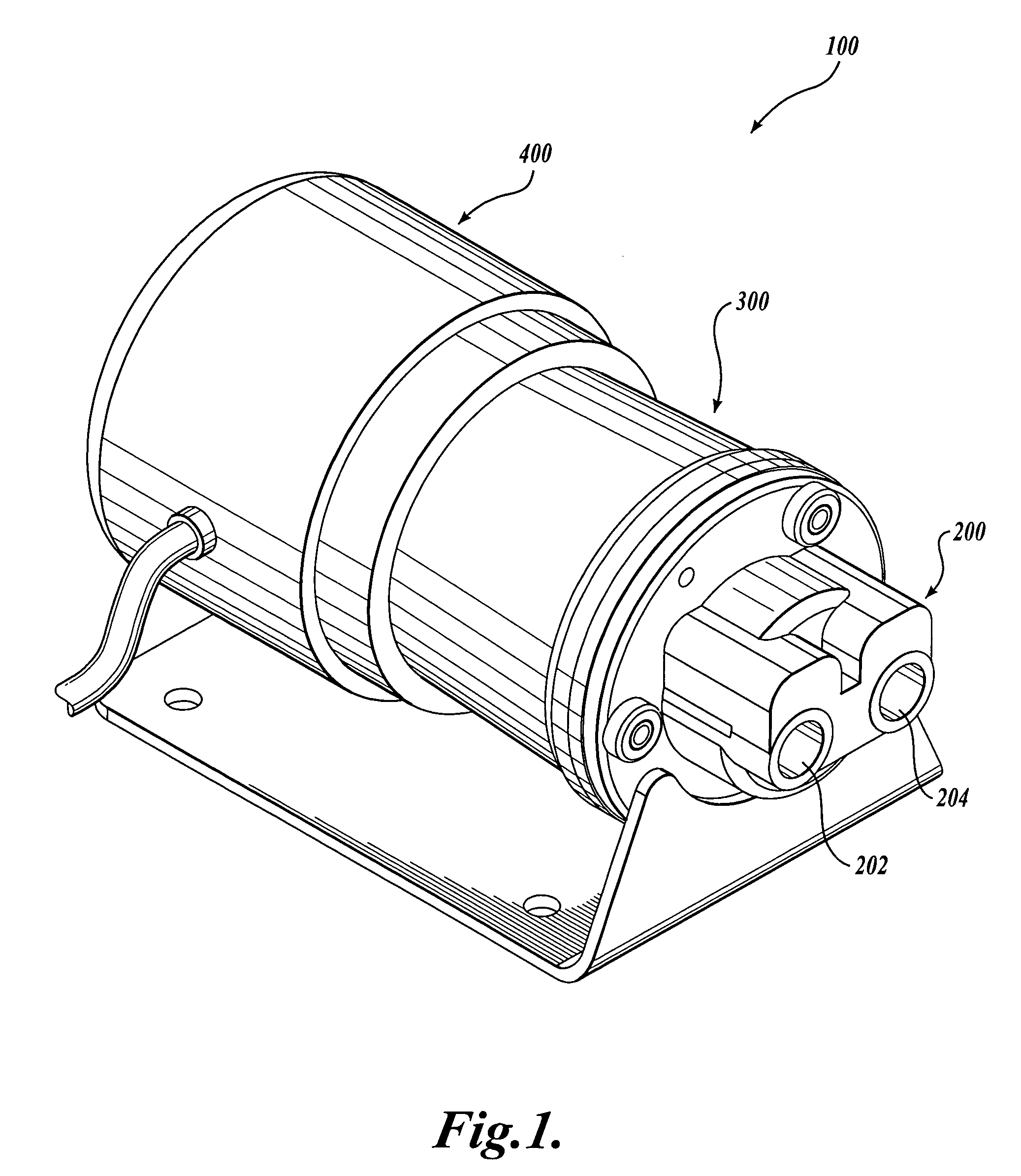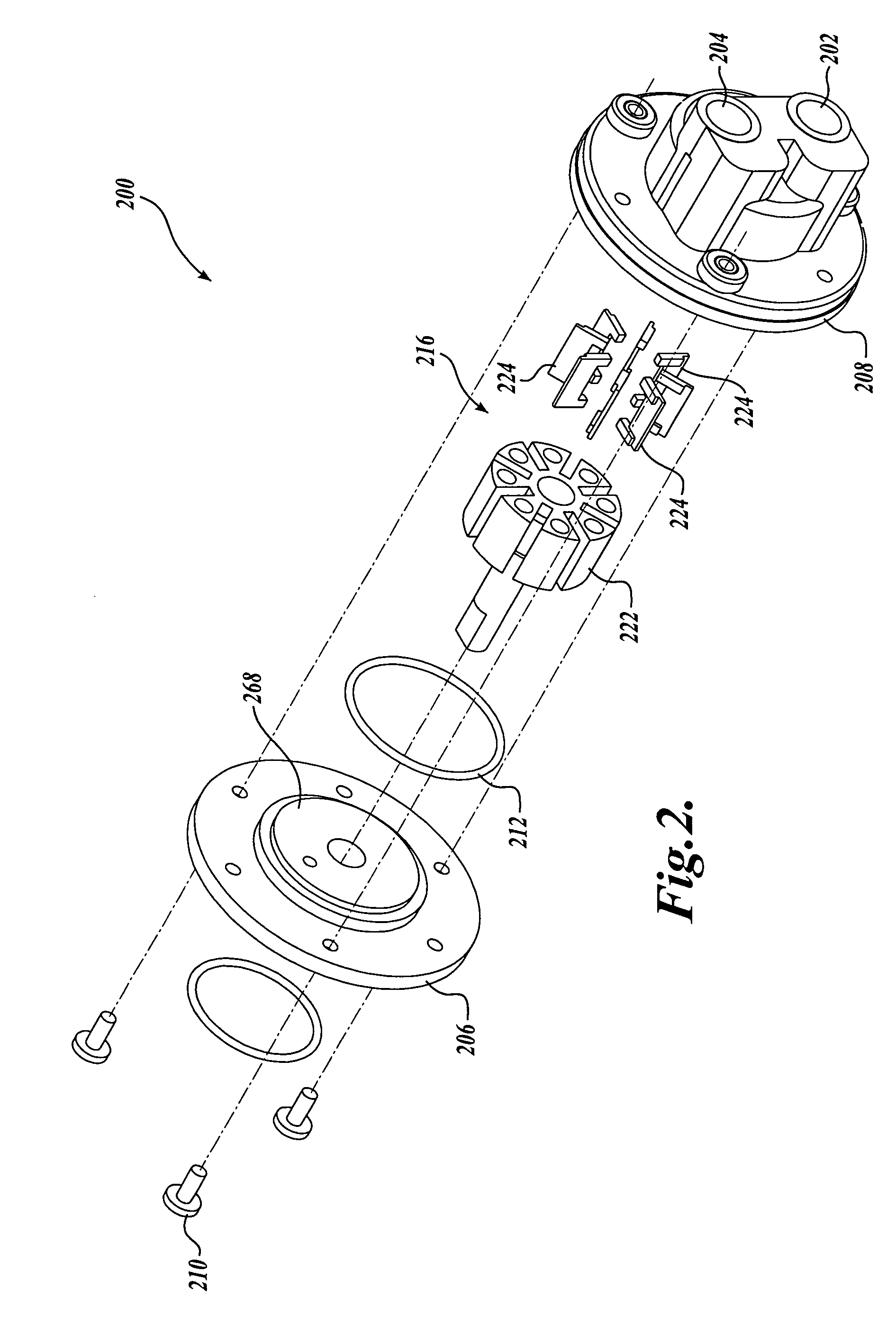Rotary vane pump
a rotary vane pump and pump body technology, applied in the direction of machines/engines, liquid fuel engines, positive displacement liquid engines, etc., can solve the problems of inefficiency, inefficiency, and inefficiency of previously developed rotary vane pumps
- Summary
- Abstract
- Description
- Claims
- Application Information
AI Technical Summary
Problems solved by technology
Method used
Image
Examples
Embodiment Construction
[0028] Referring to FIGS. 1-11, one embodiment of a pump assembly 100 formed in accordance with the present invention for pumping a fluid is shown. Turning to FIG. 1, the pump assembly 100 includes a rotary vane pump 200 coupled to a prime mover 400 via a transmission, such as magnetic coupling unit 300. Generally described, the prime mover 400 provides a rotary input to the magnetic coupling unit 300. The magnetic coupling unit 300 transfers the rotary input from the prime mover 400 to the rotary vane pump 200. The rotary vane pump 200, using the energy transferred to it from the prime mover 400 via the magnetic coupling unit 300, pumps a fluid from an input passageway 202 to an outlet passageway 204.
[0029] Focusing now in more detail upon the rotary vane pump 200 and referring to FIG. 2, the rotary vane pump 200 includes a two piece housing formed from an end plate 206 and a main body portion 208. The end plate 206 may be coupled to the main body portion 208 by any suitable means...
PUM
| Property | Measurement | Unit |
|---|---|---|
| diameter | aaaaa | aaaaa |
| diameter | aaaaa | aaaaa |
| diameter | aaaaa | aaaaa |
Abstract
Description
Claims
Application Information
 Login to View More
Login to View More - R&D
- Intellectual Property
- Life Sciences
- Materials
- Tech Scout
- Unparalleled Data Quality
- Higher Quality Content
- 60% Fewer Hallucinations
Browse by: Latest US Patents, China's latest patents, Technical Efficacy Thesaurus, Application Domain, Technology Topic, Popular Technical Reports.
© 2025 PatSnap. All rights reserved.Legal|Privacy policy|Modern Slavery Act Transparency Statement|Sitemap|About US| Contact US: help@patsnap.com



